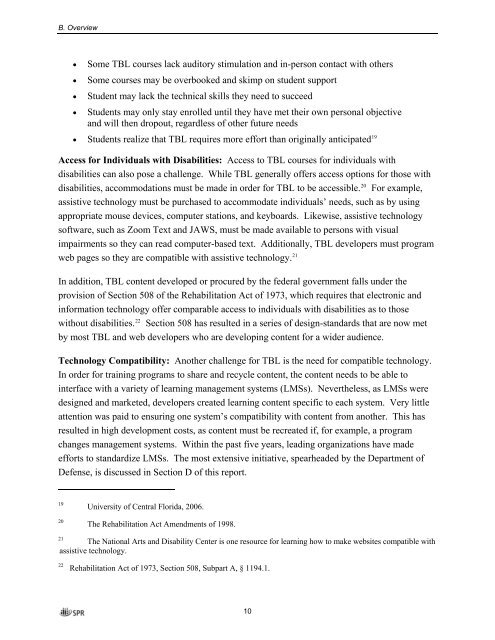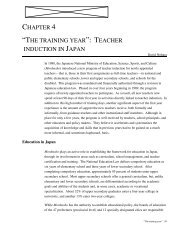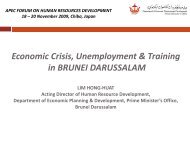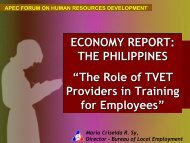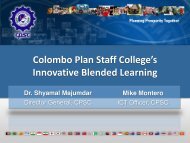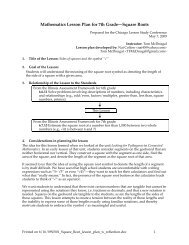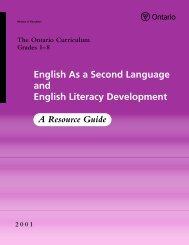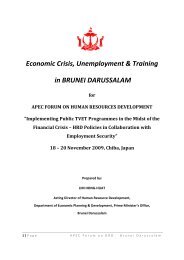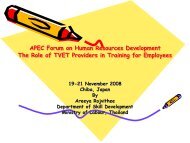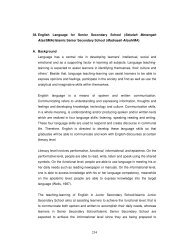Technology-Based Learning Strategies Report - APEC HRDWG Wiki
Technology-Based Learning Strategies Report - APEC HRDWG Wiki
Technology-Based Learning Strategies Report - APEC HRDWG Wiki
You also want an ePaper? Increase the reach of your titles
YUMPU automatically turns print PDFs into web optimized ePapers that Google loves.
B. OverviewSome TBL courses lack auditory stimulation and in-person contact with othersSome courses may be overbooked and skimp on student supportStudent may lack the technical skills they need to succeedStudents may only stay enrolled until they have met their own personal objectiveand will then dropout, regardless of other future needsStudents realize that TBL requires more effort than originally anticipated 19Acces s for Individuals with Disabilities: Access to TBL courses for individuals withdisabilities can also pose a challenge. While TBL generally offers access options for those withdisabilities, accommodations must be made in order for TBL to be accessible. 20 For example,assistive technology must be purchased to accommodate individuals’ needs, such as by usingappropriate mouse devices, computer stations, and keyboards. Likewise, assistive technologysoftware, such as Zoom Text and JAWS, must be made available to persons with visualimpairments so they can read computer-based text. Additionally, TBL developers must programweb pages so they are compatible with assistive technology. 21In addition, TBL content developed or procured by the federal government falls under theprovision of Section 508 of the Rehabilitation Act of 1973, which requires that electronic andinformation technology offer comparable access to individuals with disabilities as to thosewithout disabilities. 22 Section 508 has resulted in a series of design-standards that are now metby most TBL and web developers who are developing content for a wider audience.<strong>Technology</strong> Compatibility: Another challenge for TBL is the need for compatible technology.In order for training programs to share and recycle content, the content needs to be able tointerface with a variety of learning management systems (LMSs). Nevertheless, as LMSs weredesigned and marketed, developers created learning content specific to each system. Very littleattention was paid to ensuring one system’s compatibility with content from another. This hasresulted in high development costs, as content must be recreated if, for example, a programchanges management systems. Within the past five years, leading organizations have madeefforts to standardize LMSs. The most extensive initiative, spearheaded by the Department ofDefense, is discussed in Section D of this report.1920University of Central Florida, 2006.The Rehabilitation Act Amendments of 1998.21The National Arts and Disability Center is one resource for learning how to make websites compatible withassistive technology.22Rehabilitation Act of 1973, Section 508, Subpart A, § 1194.1.10


